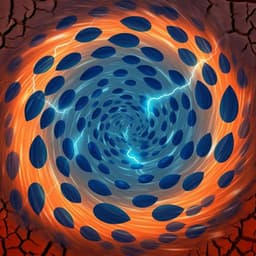
Earth Sciences
Eddy activity in the Arctic Ocean projected to surge in a warming world
X. Li, Q. Wang, et al.
This study, conducted by Xinyue Li, Qiang Wang, Sergey Danilov, Nikolay Koldunov, Caili Liu, Vasco Müller, Dmitry Sidorenko, and Thomas Jung, reveals a dramatic tripling in eddy kinetic energy in the Arctic Ocean due to climate warming. With a focus on the vital role of Arctic eddy activity, this research emphasizes the importance of accurate climate models to understand the impacts on climate and ecosystems.
~3 min • Beginner • English
Related Publications
Explore these studies to deepen your understanding of the subject.







